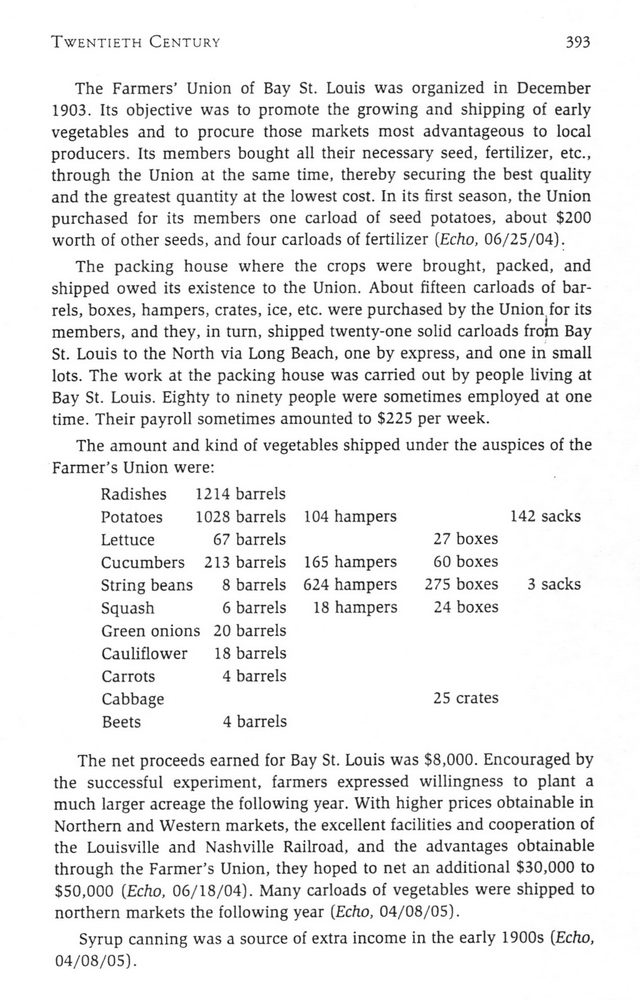This text was obtained via automated optical character recognition.
It has not been edited and may therefore contain several errors.
Twentieth Century 393 The Farmers? Union of Bay St. Louis was organized in December 1903. Its objective was to promote the growing and shipping of early vegetables and to procure those markets most advantageous to local producers. Its members bought all their necessary seed, fertilizer, etc., through the Union at the same time, thereby securing the best quality and the greatest quantity at the lowest cost. In its first season, the Union purchased for its members one carload of seed potatoes, about $200 worth of other seeds, and four carloads of fertilizer [Echo, 06/25/04). The packing house where the crops were brought, packed, and shipped owed its existence to the Union. About fifteen carloads of barrels, boxes, hampers, crates, ice, etc. were purchased by the Union, for its members, and they, in turn, shipped twenty-one solid carloads from Bay St. Louis to the North via Long Beach, one by express, and one in small lots. The work at the packing house was carried out by people living at Bay St. Louis. Eighty to ninety people were sometimes employed at one time. Their payroll sometimes amounted to $225 per week. The amount and kind of vegetables shipped under the auspices of the Farmer?s Union were: Radishes 1214 barrels Potatoes 1028 barrels 104 hampers Lettuce 67 barrels 27 boxes Cucumbers 213 barrels 165 hampers 60 boxes String beans 8 barrels 624 hampers 275 boxes Squash 6 barrels 18 hampers 24 boxes Green onions 20 barrels Cauliflower 18 barrels Carrots 4 barrels Cabbage 25 crates Beets 4 barrels The net proceeds earned for Bay St. Louis was $8,000. Encouraged by the successful experiment, farmers expressed willingness to plant a much larger acreage the following year. With higher prices obtainable in Northern and Western markets, the excellent facilities and cooperation of the Louisville and Nashville Railroad, and the advantages obtainable through the Farmer?s Union, they hoped to net an additional $30,000 to $50,000 [Echo, 06/18/04). Many carloads of vegetables were shipped to northern markets the following year [Echo, 04/08/05). Syrup canning was a source of extra income in the early 1900s [Echo, 04/08/05).

Gardebled Louisiana's-Loss-Mississippi's-Gain-page-393